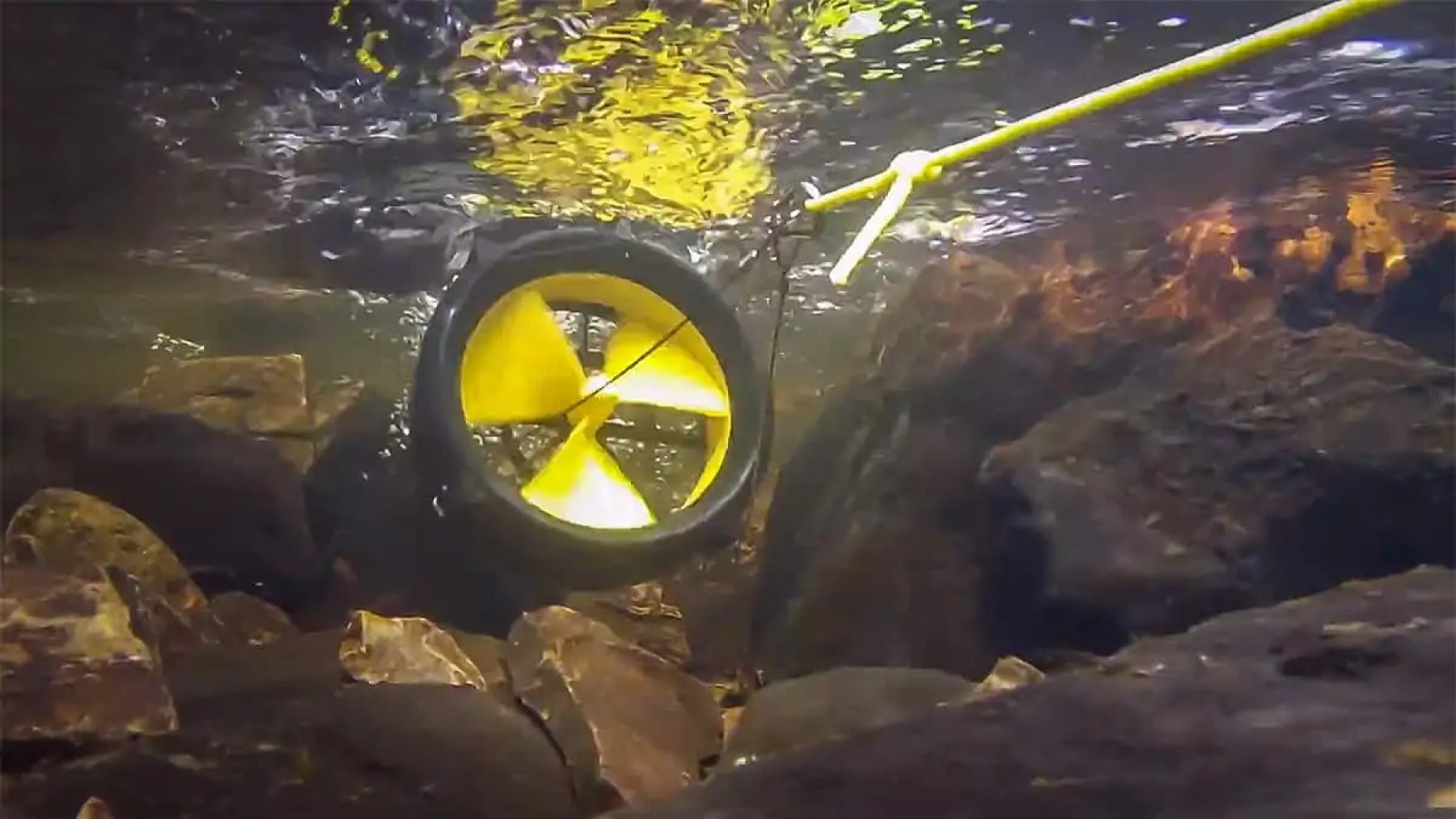This wheel transforms water into electricity: This is how you generate free energy for your home – ECOticias
Self-consumption of energy is not only achieved with solar panels (and, if you thought so, you are very wrong). There is a consensus that we will have more and more means of producing our resources at home and that not all of them will be powered exclusively by the sun. One of them is a curious “wheel” that transforms water into electricity and with which you can even charge your cell phone. Its cost is a short-term investment (we have checked), and the process is completely free.
Why solar panels if we have a “wheel”? This is how you generate electricity with water
The WaterLily Turbine is going to be the world’s best portable power generator that can easily harness energy from flowing water streams and rivers. This idealistic invention was brought to the world by Seaformatics, a company based in Canada, giving the world a new way to power our gadgets in distinct and unconventional zones.
The principal part of the WaterLily Turbine is an unlocked propeller located inside a durable case. When the device is sunk into a stream, river, or even a sufficient wind blows on it, the water or wind, in this case, causes the propeller to rotate, thus producing electricity.
This electricity gets distributed through a waterproof cable to charge items like phones, cameras, and power banks, among others. Several factors define the structure of this specific piece of equipment, and each one of them contributes to the turbine’s performance.
The anchoring system enables the fixing of the device to a well-established point that will enable it to be positioned to effectively capture the flow of water. The propeller is made of advanced blade design and technology developed by Tristar Clean Energy for almost a decade and therefore assures maximum effectiveness of the turbine in water flow ranging from 1 mph or less.
15 W of energy and extreme energy efficiency: Charging your cell phone with water is now possible
The other attractive feature of the WaterLily Turbine design is that the unit does not stop producing power in the same way wind turbines do during very bad weather. The WaterLily, on the other hand, can generate electricity even in the rain, snow or on a cloudy day as long as there is a steady flowing of water.
Thus, it is suitable for users involved in outdoor activities, camping, and people who live in cabins and other off-grid accommodation without access to electricity. It is through Andrew Cook’s effort and strive as Seaformatics Technologies CEO to develop a technology that will make use of the water’s power to generate energy.
The team at Seaformatics tried to find the best way to construct the blades in order to get the maximum possible power and the possibility of transportation. The net consequence is a 3 pound and 5 ounce portable turbine, which has the capability to generate up to 15 watts of power, which is a vast enhancement over the original conventional turbine.
How can you use Waterlily Turbine? Or rather, why do you need it for your home?
This kind of power output will be sufficient to charge mobile phones, cameras, other small electronics, a power bank, small camp lights or speakers, among others. Depending on the flow of water, the WaterLily Turbine is able to capture energy ranging from flow speeds of a little as 1 mph to at most 15 watts for water flows of at least 7mph or more.
This versatility permits the device to be applied in different conditions, from gentle streams up to powerful rivers or perhaps torrents. This is a main strength for the WaterLily Turbine; it is capable of producing more powerful energy and is consistent and renewable in the most isolated places.
What do you think of the Waterlily Turbine? Producing electricity with water is not easy on a small scale (China needed a waterfall the size of the Eiffel Tower, to make comparisons). These types of inventions, which can be kept at home and transported to other places, will dominate the future of energy generation and domestic self-consumption, giving way to a future in which zero emissions are also applied to homes.


